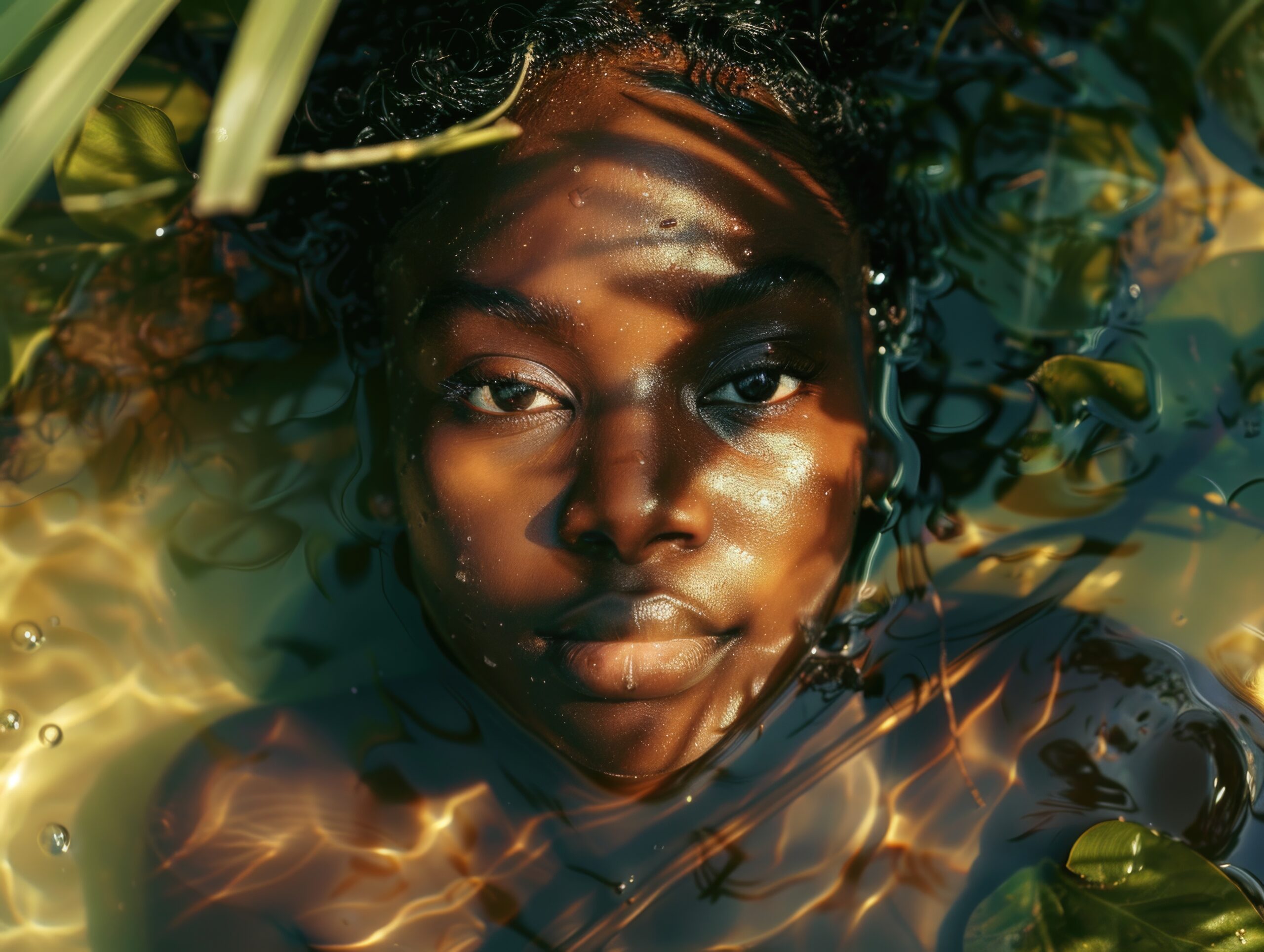The Best AI Tools to Restore Water Damaged Photos: Saving Your Memories
AI tools to restore water damaged photos can save your cherished memories from unexpected disasters.
Have you ever experienced the heartbreak of discovering your photo albums soaked by a flood or plumbing mishap?
The gut-wrenching feeling of seeing your precious memories potentially lost forever is something no one should have to endure.
But fear not, because the world of technology has a solution that might just save the day.
In this comprehensive guide, we’ll explore the cutting-edge AI technologies that are breathing new life into water-damaged photographs, preserving our most treasured moments for generations to come.
From understanding the science behind photo degradation to discovering the best ai tools to restore water damaged images, we’ll equip you with everything you need to know about rescuing your waterlogged memories.
So, let’s dive in and uncover the amazing world of AI-powered photo restoration, where ai tools to restore water damaged photos are revolutionizing the way we preserve our visual history!
We strongly recommend that you check out our guide on how to take advantage of AI in today’s passive income economy.
Table of Contents
Understanding Water Damage in Photos
Before we delve into the AI solutions, it’s crucial to understand what happens when photos come into contact with water.
Water damage can occur in various ways, from floods and leaks to accidental spills or high humidity.
When water seeps into photographs, it can cause a range of issues, including color fading, ink bleeding, paper warping, and even mold growth.
The severity of the damage depends on factors such as the type of photo paper, the quality of the ink, and how quickly action is taken to dry and preserve the images.
Traditional photo restoration methods often involve time-consuming manual work by skilled professionals, but with the advent of AI technology, we now have more efficient and accessible options to restore water damaged photos.
The Science of Photo Degradation
To appreciate the power of AI in photo restoration, it’s helpful to understand the science behind photo degradation.
When water interacts with photographic materials, it can trigger chemical reactions that break down the image-forming substances.
For example, in traditional silver halide prints, water can cause the silver particles to oxidize, leading to fading and discoloration.
In inkjet prints, water can cause the dyes to run or bleed, distorting the image.
Additionally, the paper itself can become weak and brittle, making it susceptible to tearing and further damage.
Understanding these processes helps AI algorithms to more accurately identify and correct the specific types of damage present in each photo.
The Rise of AI in Photo Restoration
Artificial Intelligence has revolutionized numerous fields, and photo restoration is no exception.
AI-powered tools use complex algorithms and machine learning techniques to analyze damaged photos, identify areas of degradation, and intelligently reconstruct missing or distorted elements.
These AI restore water damaged photo tools can often achieve results that rival or even surpass those of human experts, and they can do so in a fraction of the time.
The development of AI in this field has been rapid, with new and improved tools emerging regularly.
From simple mobile apps to sophisticated professional software, there’s now a wide range of options available for those looking to salvage their water-damaged memories.
How AI Restores Water Damaged Photos
The process of using AI to restore water damaged photos involves several sophisticated steps.
First, the AI analyzes the damaged image to identify areas of distortion, fading, or loss.
It then references vast databases of similar images and patterns to determine what the original, undamaged photo likely looked like.
Using this information, the AI can reconstruct missing parts of the image, correct color imbalances, and even sharpen blurred details.
Some advanced AI systems can even remove water stains and repair physical damage to the photo paper itself.
The result is often a remarkably accurate restoration that brings the photo back to its original glory.
Top AI Tools for Photo Restoration
Now that we understand how AI can restore water damaged photos, let’s explore some of the best tools available in 2024.
These AI-powered solutions offer a range of features and capabilities to suit different needs and skill levels.
From user-friendly mobile apps to professional-grade software, there’s an AI tool out there for everyone looking to salvage their water-damaged memories.
We’ll examine the pros and cons of each option, helping you choose the best tool for your specific restoration needs.
Remember, while these AI tools are incredibly powerful, they work best on digital scans of your damaged photos, so be sure to carefully digitize your images before beginning the restoration process.
1. Photofix AI
Photofix AI is a popular choice for those seeking an easy-to-use solution to restore water damaged photos.
This cloud-based tool uses advanced machine learning algorithms to analyze and repair a wide range of water-related damage.
Users simply upload their damaged photos to the Photofix AI website, and within minutes, they receive a restored version.
The software is particularly adept at handling color fading, water stains, and minor tears.
One of the standout features of Photofix AI is its ability to restore water damaged photos in batches, making it ideal for those with large collections of affected images.
While it may not offer the same level of control as some professional-grade tools, Photofix AI’s simplicity and effectiveness make it a top choice for many users.
2. DeepRestoreAI
For those seeking more advanced features and greater control over the restoration process, DeepRestoreAI is an excellent option.
This powerful desktop application uses deep learning techniques to restore water damaged photos with impressive accuracy.
DeepRestoreAI offers a range of tools for fine-tuning the restoration process, allowing users to adjust parameters such as color balance, sharpness, and noise reduction.
The software also includes specialized algorithms for dealing with specific types of water damage, such as mold spots and ink bleeding.
While DeepRestoreAI has a steeper learning curve than some other options, its powerful features make it a favorite among photography enthusiasts and professionals alike.
3. AquaFix Photo Restorer
AquaFix Photo Restorer is a mobile app that brings the power of AI photo restoration to your smartphone.
This user-friendly app uses advanced AI algorithms to restore water damaged photos quickly and easily.
Users can simply take a photo of their damaged print or upload a digital image, and AquaFix will work its magic.
The app offers a range of preset filters optimized for different types of water damage, as well as manual adjustment tools for fine-tuning the results.
While it may not offer the same level of detail as some desktop applications, AquaFix Photo Restorer’s convenience and solid performance make it a great choice for quick restorations on the go.
4. HydroRescue Pro
HydroRescue Pro is a professional-grade AI tool designed specifically to restore water damaged photos.
This powerful software uses a combination of machine learning and traditional image processing techniques to achieve stunning results.
HydroRescue Pro excels at handling severe water damage, including warped paper, heavy staining, and extensive color fading.
The software offers a high degree of customization, allowing users to fine-tune every aspect of the restoration process.
While HydroRescue Pro comes with a steeper price tag and requires more technical knowledge than some other options, its powerful features and exceptional results make it a top choice for serious photo restoration work.
DIY vs. Professional Services: When to Use AI Tools
With the availability of powerful AI tools to restore water damaged photos, many people wonder whether they should attempt the restoration process themselves or seek professional help.
The answer often depends on the extent of the damage, the value of the photos, and your own comfort level with technology.
For moderately damaged photos or those with primarily digital copies, using AI tools yourself can be an excellent and cost-effective solution.
However, for severely damaged physical prints, irreplaceable historical photos, or when you’re not confident in your tech skills, it may be worth consulting a professional restoration service that utilizes AI technology.
These experts can combine the power of AI with their own expertise to achieve the best possible results.
Tips for Using AI to Restore Water Damaged Photos
If you decide to use AI tools to restore your water damaged photos, here are some tips to help you get the best results:
- Start with a high-quality scan: The better your initial digital copy, the more accurate the AI restoration will be.
- Try multiple tools: Different AI systems may produce varying results, so experiment with a few options to find the best outcome.
- Be patient: Some AI restore water damaged photo processes can take time, especially for severely damaged images.
- Save your originals: Always keep your original damaged photos or scans, in case future technology offers even better restoration options.
- Adjust settings carefully: If your chosen AI tool offers manual adjustments, make small, incremental changes to avoid over-processing.
- Consider the emotional value: For particularly precious photos, it may be worth using multiple AI tools or consulting a professional to ensure the best possible restoration.
The Future of AI in Photo Restoration
As we look to the future, the potential for AI in photo restoration is truly exciting.
Researchers are continuously developing more advanced algorithms that can handle increasingly complex types of damage.
We’re likely to see AI tools that can not only restore water damaged photos but also reconstruct missing parts of images with unprecedented accuracy.
Additionally, the integration of AI with other technologies, such as augmented reality, could allow us to interact with restored photos in new and immersive ways.
Imagine being able to step into a restored version of a water-damaged family photo, experiencing the moment as if you were there!
As AI continues to evolve, we can expect even more innovative solutions for preserving and enhancing our precious photographic memories.
Ethical Considerations in AI Photo Restoration
While the ability of AI to restore water damaged photos is undoubtedly impressive, it’s important to consider the ethical implications of this technology.
As AI becomes more advanced, questions arise about the authenticity of restored images and the potential for misuse.
For instance, could AI be used to alter historical photos in misleading ways?
How do we ensure that AI-restored photos are clearly labeled as such, especially in contexts where image authenticity is crucial?
These are important questions that the photography and AI communities will need to grapple with as the technology continues to advance.
It’s crucial that we develop ethical guidelines and best practices for the use of AI in photo restoration to ensure that this powerful technology is used responsibly.
Conclusion: Preserving Memories with AI
The development of AI tools to restore water damaged photos has been nothing short of revolutionary.
These powerful technologies have given us the ability to rescue precious memories that might otherwise have been lost forever.
From user-friendly mobile apps to sophisticated professional software, there’s now a wide range of options available for those looking to restore their water-damaged photographs.
As we’ve explored in this article, AI restore water damaged photo tools offer numerous advantages, including speed, accuracy, and the ability to handle even severely damaged images.
While it’s important to consider factors such as the extent of damage and the value of the photos when deciding whether to use AI tools or seek professional help, there’s no doubt that AI has made photo restoration more accessible than ever before.
As we look to the future, the potential for AI in this field is truly exciting.
With ongoing advancements in machine learning and image processing, we can expect even more impressive restoration capabilities in the years to come.
However, it’s crucial that we also consider the ethical implications of this technology and work to develop responsible guidelines for its use.
Ultimately, the ability to restore water damaged photos using AI is about more than just fixing pictures – it’s about preserving our personal and collective history.
These tools allow us to safeguard our most cherished memories, ensuring that future generations can connect with their past in vivid detail.
So whether you’re a professional photographer, a family historian, or simply someone with a box of water-damaged photos in the attic, consider exploring the world of AI photo restoration.
You might just be amazed at what’s possible when cutting-edge technology meets treasured memories.
Frequently Asked Questions (FAQ)
Can damaged photos be repaired AI?
Yes, damaged photos can indeed be repaired using AI technology.
Artificial Intelligence has made significant advancements in photo restoration, allowing for the repair of various types of damage, including water damage, tears, scratches, and fading.
AI algorithms analyze the damaged areas of a photo and use machine learning techniques to reconstruct missing or distorted elements.
These AI tools can often achieve results that rival or even surpass traditional manual restoration methods, and they can do so much more quickly and efficiently.
However, the effectiveness of AI repair can vary depending on the extent and type of damage, as well as the quality of the AI tool being used.
How do you restore a water damaged photo?
Restoring a water damaged photo using AI typically involves the following steps:
- Digitize the photo: Scan or photograph the damaged photo to create a high-quality digital copy.
- Choose an AI restoration tool: Select a suitable AI tool based on your needs and the extent of the damage.
- Upload the image: Load the digital copy of your damaged photo into the chosen AI tool.
- Run the AI restoration process: Allow the AI to analyze and restore the image. This may take a few minutes to several hours, depending on the tool and the complexity of the damage.
- Review and adjust: Examine the restored image and make any necessary manual adjustments if the AI tool allows for it.
- Save the restored version: Once you’re satisfied with the result, save the restored image.
Remember, it’s always best to work with a copy of your original photo and to keep the original damaged version for reference.
What is the best AI tool for image restoration?
The “best” AI tool for image restoration can vary depending on your specific needs, budget, and technical expertise. However, some highly regarded options include:
- Photofix AI: A user-friendly, cloud-based solution ideal for quick restorations.
- DeepRestoreAI: A powerful desktop application offering advanced features and greater control.
- AquaFix Photo Restorer: A mobile app that brings AI restoration capabilities to smartphones.
- HydroRescue Pro: A professional-grade tool designed specifically for water damage restoration.
Each of these tools has its strengths, and the best choice will depend on factors such as the type and extent of damage, your budget, and whether you need a simple solution or more advanced features.
It’s often worth trying multiple tools to see which produces the best results for your specific photos.
What is the AI that fixes photos?
There isn’t just one AI that fixes photos, but rather a variety of AI-powered tools and technologies designed for photo restoration and enhancement. These include:
- Generative Adversarial Networks (GANs): This type of AI is particularly good at reconstructing missing or damaged parts of images.
- Deep Learning Models: These can be trained on vast datasets of photos to learn how to correct various types of damage.
- Neural Networks: These can be used to enhance details, correct colors, and remove noise from images.
Many commercial photo restoration tools use a combination of these AI technologies, along with traditional image processing techniques, to achieve the best results.
Some popular AI-powered photo restoration and enhancement tools include Adobe Photoshop’s Neural Filters, Topaz Labs’ AI-based software suite, and various online services like Photofix AI and Remini.
These tools are constantly evolving, with new and improved AI models being developed to handle an ever-wider range of photo restoration tasks.

We strongly recommend that you check out our guide on how to take advantage of AI in today’s passive income economy.




